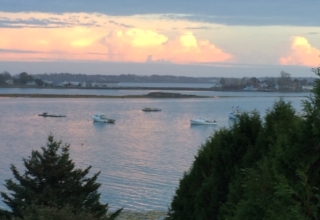
One other important distinctive needs to be drawn. As in the case of Future Search, Open Space meetings don’t need the experts. However, it is not about numbers or the diversity of Open Space participants. It is about the assumption that the right people are there. These people just need to be agile of thought as well as steadfast in their commitment to furthering the welfare of the organization or community they represent. While those initiating Open Space meetings might not be considering task-based outcomes, there are several process-based outcomes that are meaningful and ultimately critical to the success of an Open Search meeting. These outcomes have to do with safety, trust, courtesy—and appreciation. The assumptions identified at the start of the meeting and reinforced by Open Space facilitators throughout the meeting ensure or at least create conditions for realization of these process-oriented outcomes.
As in the case of most collateral organizations, Open Space meetings are usually convened for several hours or for a few days. As in the case of Future Search, much of the work in Open Space is done in small groups—with occasional report outs to the entire group. Unlike in Future Search, the small group discussions are often quite fluid in an Open Space meeting. Participants easily leave one group and join another—or start a new group that will address a new topic or engage an existing topic in a new way. Butcher paper and flip charts once again “rule the day.” Updates of small group topics and initial points of inquiry related to these topics are posted on these charts along with the place and time where and when this group will be convened.
We find that there are two critical structural components of Open Space that should not be overlooked. First, someone in each small group should be designated as the recorder to take notes (often writing them on a flip chart). Second, at the end of each or at least most open space sessions, a summary document should be compiled from the notes taken by the recorder in each of the small group. This summary is distributed as a paper or electronic document to all participants. The distributed documents are used as the basis for prioritizing issues, identifying next steps, and continuing work beyond the meeting itself.
This critical component, in turn, points to one other structure that is introduced at the end of the Open Space meeting: all or most of the small groups report to the whole group on follow-up activities. If one of the assumptions I listed above is accurate—that passion is inherent in the topics being addressed– then this passion (shared by Open Space participants) should extend beyond the Open Space meeting. The passion should motivate continuing attention to the issues being identified and addressed at the Open Space meeting. Without extensive formal monitoring, follow up activities should “self-organize” and important actions should emerge from this collateral organization.
Along with other collateral organizations, the Open Space format can produce startling results and yield needed reform in the way that intractable problems are being viewed and either managed or resolved. The fresh breeze of freely generated ideas, perspectives and practices just might circulate around an existing organization or community following a Future Search or Open Space meeting. This fresh breeze might be welcomed as it swirls around the heads and hearts of those living and working in the organization or community. It should also be noted, however, that heads and hearts might be troubled by this breeze. Members of the organization or community might remain intransigent and resentful of the “non-realistic” outcomes of this “chaotic” and wasteful collateral meeting. Thus, the new viewpoint might be both welcomed and rejected.
Download Article














